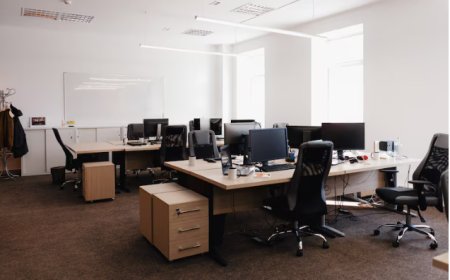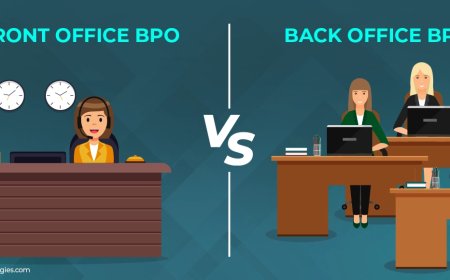The Importance of Office Furniture in Creating a Productive Workspace
Office furniture plays a crucial role in shaping the environment where employees spend a significant portion of their day. The right office furniture can transform a dull, uncomfortable space into an inviting, productive, and efficient workplace. When businesses invest thoughtfully in office furniture, they are not only enhancing the aesthetic appeal of their offices but also promoting employee well-being, efficiency, and collaboration. Ergonomically designed desks, chairs, storage units, and meeting tables contribute to physical comfort, reducing fatigue and the risk of workplace injuries. In todays fast-paced work culture, where many employees face long hours at their desks, the importance of well-designed office furniture cannot be overstated.
Office furniture is not merely about utility; it also reflects a companys brand identity and values. Modern offices are adopting designs that foster creativity and openness, and the choice of furniture often mirrors these goals. For instance, collaborative workspaces with modular furniture encourage teamwork and communication, while quiet zones with comfortable seating support focus and concentration. Moreover, office furniture can influence employee morale, motivation, and even recruitment. Prospective employees often look at office environments as indicators of company culture, making furniture choices a strategic decision for employers. Investing in quality office furniture thus represents a commitment to creating a workplace where employees feel valued and empowered.
How to Choose the Right Office Furniture for Your Workspace
Selecting the right office furniture involves understanding the specific needs of your workforce and the nature of the work being performed. Businesses must consider factors such as the available office space, workflow, and the importance of ergonomics. Ergonomic office furniture is designed to support proper posture and reduce strain on the body, which is essential for preventing musculoskeletal problems. Adjustable chairs with lumbar support, height-adjustable desks, and monitor stands are examples of furniture that can be customized to fit individual employees. When employees have furniture suited to their needs, their productivity and comfort levels increase, leading to fewer sick days and higher job satisfaction.
Office furniture should also be chosen with flexibility in mind. As the nature of work evolves, so do office layouts and requirements. Modular furniture systems offer adaptability, allowing businesses to reconfigure spaces easily for different tasks or team sizes. Storage solutions are another important consideration; well-organized offices reduce clutter and distractions, supporting efficient workflows. Filing cabinets, shelves, and lockers should be chosen not only for capacity but also for their accessibility and integration with the overall office design. The materials and finishes of office furniture also matter; durable materials like metal and hardwood ensure longevity, while colors and textures can create an atmosphere that aligns with the companys brand image.
The Impact of Office Furniture on Employee Health and Well-being
Employee health and well-being are directly influenced by the quality and design of office furniture. Poorly designed or inappropriate furniture can lead to physical discomfort, chronic pain, and long-term health issues. Prolonged sitting on non-ergonomic chairs can cause back pain, neck strain, and repetitive stress injuries. Conversely, office furniture designed with ergonomics in mind helps maintain proper alignment and encourages movement throughout the workday. Sit-stand desks, for example, allow employees to alternate between sitting and standing, reducing the risks associated with sedentary lifestyles.
Beyond physical health, office furniture also affects mental well-being. Comfortable, inviting workspaces contribute to reduced stress levels and increased focus. Colors, shapes, and textures in office furniture can create environments that either stimulate creativity or promote calmness, depending on the intended function of the space. For example, collaborative areas benefit from bright, dynamic furniture that encourages interaction, while private workstations might feature softer colors and materials to support concentration. By prioritizing both ergonomic function and aesthetic appeal, businesses create office environments where employees feel supported and motivated to perform at their best.
Trends Shaping Modern Office Furniture Design
The world of office furniture is continuously evolving, influenced by changes in work habits, technology, and design philosophy. One major trend is the move towards flexible and multi-functional furniture that caters to diverse work styles. As more companies embrace hybrid work models and flexible schedules, office furniture must accommodate varying needs, from solo focused work to group brainstorming sessions. Modular desks, movable partitions, and versatile seating arrangements allow offices to adapt quickly to different tasks and team sizes.
Sustainability is another important trend influencing office furniture choices. Environmentally conscious businesses prefer furniture made from recycled or renewable materials, and manufacturers are responding with eco-friendly product lines. Sustainable office furniture not only reduces environmental impact but also appeals to employees and clients who value corporate responsibility. Additionally, technology integration is becoming standard in office furniture design. Desks with built-in charging stations, cable management systems, and smart features help create seamless work experiences that enhance productivity and reduce clutter.
The Role of Office Furniture in Enhancing Collaboration and Communication
In todays collaborative work culture, office furniture is more than a personal workstation; its a tool to facilitate teamwork and communication. Open-plan offices with communal tables and shared seating areas encourage spontaneous interactions and idea exchange. Furniture that supports easy movement and flexible grouping fosters a sense of community and breaks down barriers between departments. Adjustable conference tables and mobile whiteboards enhance meeting efficiency by allowing quick reconfiguration for different purposes.
Furthermore, incorporating comfortable lounge furniture in breakout areas provides informal settings for discussions and relaxation. These spaces contribute to a balanced work environment where employees can recharge and connect with colleagues. Thoughtful office furniture design supports various communication styles, from quiet one-on-one conversations to lively group brainstorming. By aligning furniture choices with organizational goals for collaboration, companies can build workspaces that drive innovation and engagement.
Conclusion: Investing in Quality Office Furniture for Long-Term Success
Office furniture is a foundational element of any successful workspace. Beyond aesthetics, it plays a vital role in employee health, productivity, and company culture. By choosing ergonomic, flexible, and sustainable furniture, businesses create environments that support diverse work styles and adapt to changing needs. Modern office furniture trends emphasize collaboration, technology integration, and well-being, making the workplace not just a site of labor but a dynamic space for growth and innovation.
For companies looking to enhance their office environment, investing in quality office furniture is a strategic decision that yields long-term benefits. It demonstrates a commitment to employee comfort and productivity while reinforcing the brands identity. Whether outfitting a startup or redesigning a corporate headquarters, thoughtful office furniture selection is key to building a workspace where people thrive. When you prioritize office furniture as an essential component of your workplace strategy, you set the stage for ongoing success and employee satisfaction.



























